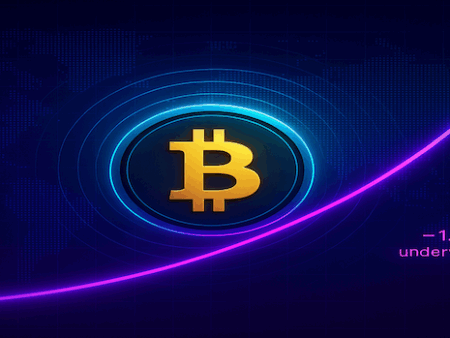Bitcoin Reserve: Could It Dethrone the Dollar?
📢 At the State of Crypto Summit on June 12, Coinbase CEO Brian Armstrong asserted that a Bitcoin reserve could ultimately replace the US dollar as the world’s primary reference asset, underscoring the potential for a seismic shift in global finance.
 💡 During his keynote in Lower Manhattan, Armstrong explained that money functions as both a medium of exchange and a store of value. He praised dollar-pegged stablecoins for excelling at the first task and argued that fiat currencies are faltering when it comes to maintaining long-term value. His vision centers on establishing a Bitcoin reserve to counteract unchecked government spending.
💡 During his keynote in Lower Manhattan, Armstrong explained that money functions as both a medium of exchange and a store of value. He praised dollar-pegged stablecoins for excelling at the first task and argued that fiat currencies are faltering when it comes to maintaining long-term value. His vision centers on establishing a Bitcoin reserve to counteract unchecked government spending.
📈 “Democracies around the world are really struggling to get their deficit spending under control,” Armstrong warned, framing his “crazy little bit-out-there idea” as a necessary corrective mechanism. If public finances continue to deteriorate, he believes that individuals and institutions will seek safety in a Bitcoin reserve during times of uncertainty.
🌐 Armstrong pointed to Bitcoin’s algorithmic cap of 21 million coins as an intrinsic safeguard against inflation. He suggested that, unlike fiat currencies—which governments can print at will—a Bitcoin reserve could act as an external brake on deficit monetization, preserving purchasing power over the long term.
🔒 Earlier this year, Armstrong urged the US government to consider building a “strategic bitcoin reserve,” arguing that such a fund could bolster confidence in national finances. His proposal envisions a Bitcoin reserve held alongside traditional assets, creating a diversified portfolio that mitigates risks tied to sovereign debt.
📊 The backdrop to Armstrong’s thesis is a US federal debt nearing $37 trillion—an increase of nearly $4 trillion in the last eighteen months alone. He warned that if these fiscal trends go unchecked, a flight from sovereign currencies to a Bitcoin reserve could trigger dramatic capital shifts, reshaping the global monetary system.
📰 Armstrong’s remarks followed a surprise prerecorded message from former President Donald Trump, who touted plans for the GENIUS Act to support dollar-backed stablecoins and promised regulatory frameworks to help America “dominate the future of crypto and Bitcoin.” This political endorsement further legitimized the concept of a Bitcoin reserve in policy circles.
💰 In March, the White House issued an executive order establishing a Strategic Bitcoin Reserve and a US Digital Asset Stockpile. The directive tasks the Treasury with consolidating forfeited BTC and acquiring additional coins on a budget-neutral basis, laying the groundwork for a formal Bitcoin reserve under federal oversight.
🚨 White House adviser Bo Hines recently revealed that the administration will unveil the detailed architecture of its Strategic Bitcoin Reserve “in short order,” signaling that the transition from proposal to implementation may be imminent. Stakeholders across finance and government are watching closely for the official blueprint of this Bitcoin reserve.
🏦 At press time, BTC traded at $104,876, reflecting the market’s ongoing assessment of Bitcoin’s role in global finance. Whether Armstrong’s vision of a Bitcoin reserve displacing the dollar comes to fruition remains to be seen, but his remarks have undoubtedly ignited a fresh debate on the future of money.



















